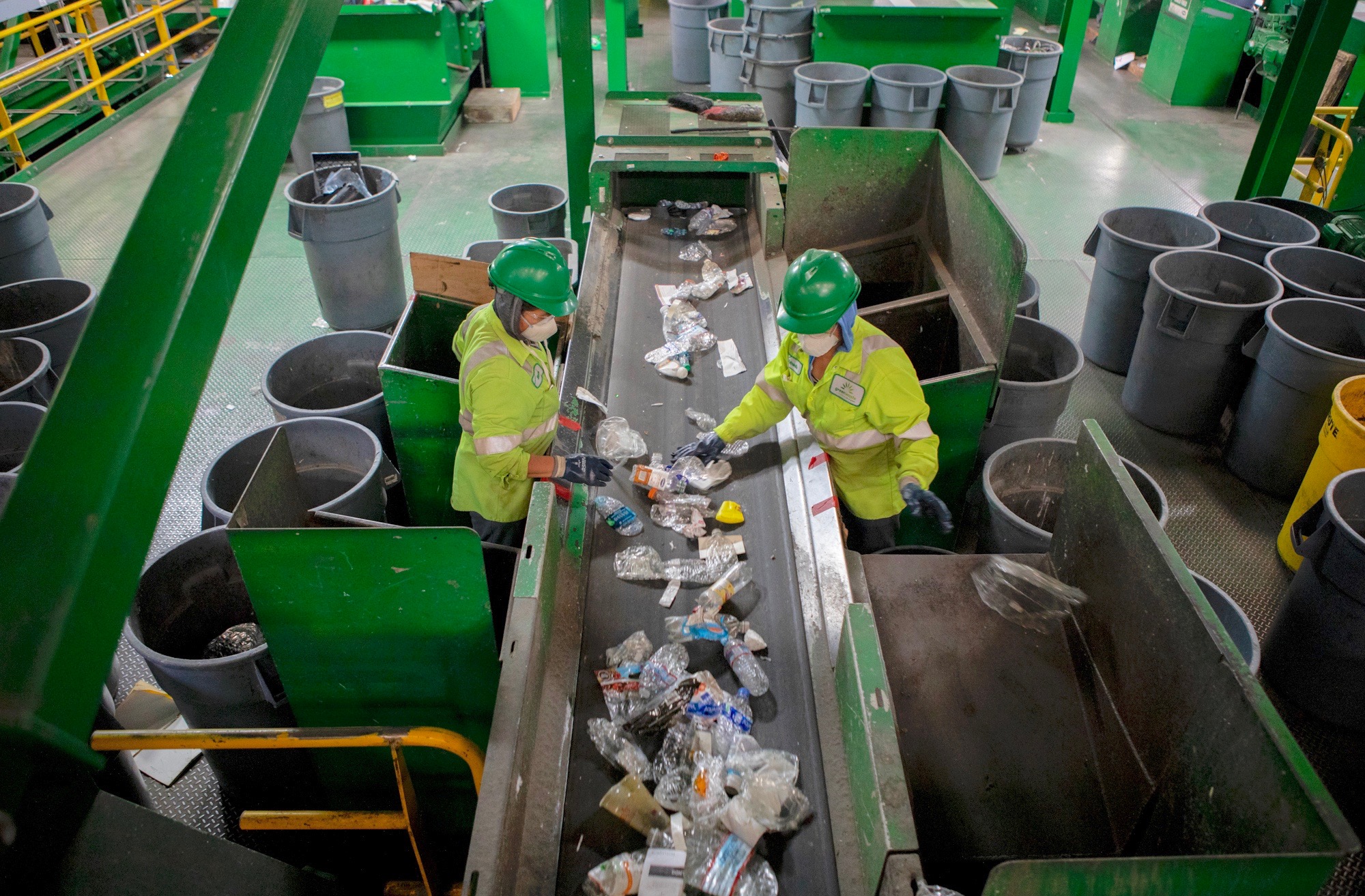Daily Business Report-Aug. 13, 2019
GreenWaste Recovery employees sort through plastic items on a conveyor belt at the company’s materials recovery facility in San Jose, California. Photo by Anne Wernikoff for CalMatters, July 29, 2019.
Tired of plastic junk?
California’s recycling bills propose dramatic new rules
By Rachel Becker | CalMatters
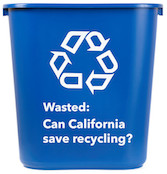
As bills that take aim at plastic waste make their way through California’s Legislature, the damage they intend to fix already is rippling through the state’s recycling economy.
On Aug. 5, rePlanet, a major collector of beverage bottles and cans, shut its 284 collection centers in California, citing lower subsidies from the state as well as challenges facing recyclers and municipalities across California: higher operating costs and dwindling returns from post-consumer recyclables.
It was a vivid example of challenges threatening the ability of Californians to recycle and helps explain the progress a trio of bills is making through the Legislature. All aim to change the economics of recycling by legislating a tough financial incentive for manufacturers.
Two of the bills, authored by Democrats Lorena Gonzalez in the Assembly and Ben Allen in the Senate, are identical and would require manufacturers to reduce waste from packaging and certain plastic products. The other, by Assemblyman Phil Ting, calls on manufacturers to increase the minimum recycled content in plastic beverage bottles over the next decade.
All of the bills have cleared their houses of origin and their authors say they are cautiously optimistic they will pass in the Democratic-controlled Assembly and Senate. They still face pushback, however, on their way to the governor’s desk, notably from a new and secretive coalition called Californians for Recycling and the Environment that is encouraging the public to tell legislators to vote no on Sen. Allen’s bill, SB 54.
The coalition represents the packaging industry and officially formed “maybe a few weeks ago,” according to spokesman Micah Grant. Despite its effort to kill at least one of the bills, Grant insisted in an email to CalMatters that the group “doesn’t ‘oppose’ SB 54.”
As the votes near on each of the three bills, industry groups listed as opposition to the twin bills in the Assembly and Senate—including the American Chemistry Council, the Grocery Manufacturers’ Association, and the powerful American Beverage Association—say they’re not trying to kill the legislation. They just want to see changes.
The bills come as California’s recycling industry is trying to adjust to recent upheaval in the international recycling markets. Historically, California has exported about a third of its recycling, including about two-thirds of recycling in the blue bins—with a big chunk going to China, according to estimates from CalRecycle, California’s Department of Resources Recycling and Recovery.
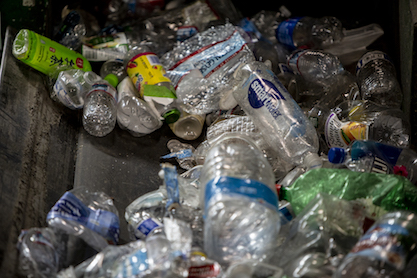
China’s decision to tighten contamination standards and clamp down on imports of materials such as unsorted paper and certain grades of plastics means a major market has been lost to California. On top of that, CalRecycle warned in a recent report that a surge of investments in plastic manufacturing could “undercut prices for recovered plastics.”
For Recology, an employee-owned recycler serving more than a dozen California counties, the market for plastic bags and clear packaging films was never particularly strong. The upheaval, however, means the scraps of plastic wrappings and bags that once left the facility as contaminants in bales of paper now end up in the local landfill, according to Eric Potashner, Recology’s vice president and senior director of strategic affairs.
“It’s the option of last resort, and that’s where we are right now as an industry,” Potashner said. He’d prefer that manufacturers stop making as much material that will inevitably end up in a landfill. “Either create a market for it or make something else,” he said.
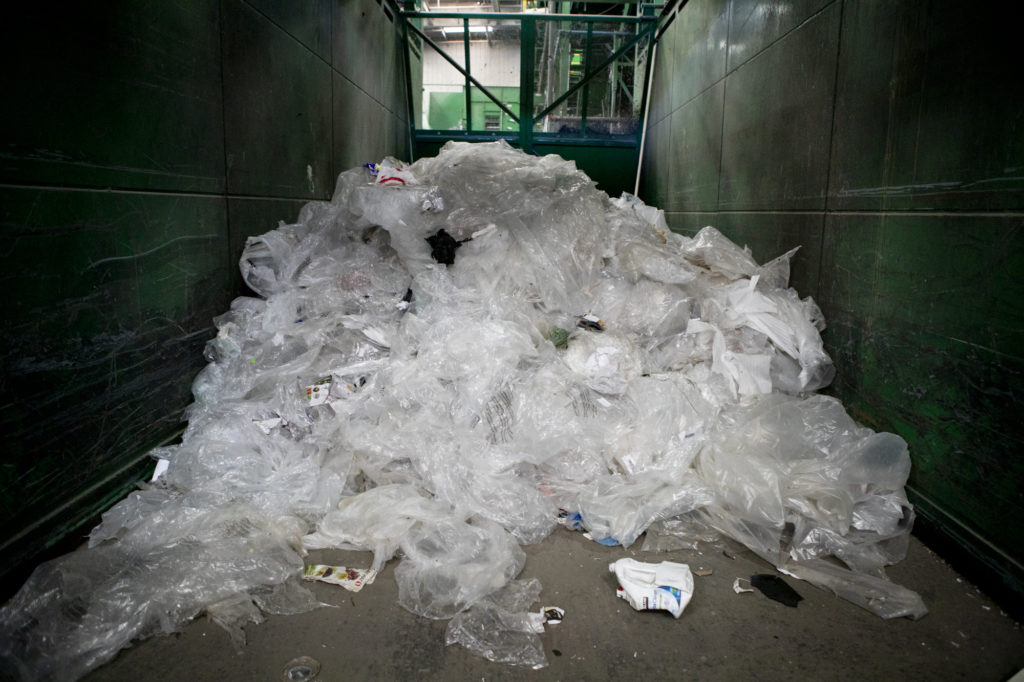
Skin in the game
It comes down to the difference between recyclable, and recycled, Potashner said. Items aren’t recyclable just because they end up in the blue bin; there has to be someone who wants to buy recycled materials and turn them into something new. Right now, that’s only rarely the case for packaging and food materials, he said.
Ricardo Lopez, the manager of GreenWaste Recovery’s recycling facility in San Jose, said he’s had somewhat better luck finding a home for mixed food containers and clear packaging films. “The market’s hit or miss,” he said. “You have to dangle other items at a cheaper rate for them in order to take certain other items, to put you ahead of other competitors.” That could mean selling bales of detergent bottles at a better rate if a buyer also takes bales of film, for example.
The fix, according to Potashner at Recology, is for manufacturers to take responsibility for their products even after they’re tossed in the blue bin. That’s why Recology supports the California Circular Economy and Plastic Pollution Reduction Act, a set of identical bills that started in the Senate as SB 54 and the Assembly as AB 1080.
“The one group that doesn’t have skin in this game right now is the one we need most, which is the manufacturers and the retailers that are putting the product in the waste stream in the first place,” Potashner said.
As written, the Act requires manufacturers to make all single-use packaging and the ten most-littered single-use plastics out of recyclable or compostable materials by the year 2030. It also sets targets for increasing recycling of plastic packaging and certain single-use plastic products over the next decade, reaching a 75 percent recycling rate in 2030. If manufacturers don’t hit those recycling rate targets, they could be barred from selling the packaging or single-use products in California.
“That’s a pretty big deal,” said Allen, a Democrat from Santa Monica and an author of the Act. “If you can’t sell, you don’t have access to the market. And it’s the fifth largest economy in the world on its own.”
There’s a lot the Act leaves to CalRecycle to figure out. It doesn’t, for instance, spell out which ten single-use plastics would be covered. And it doesn’t address whether the state’s recycling infrastructure needs to be improved, or what exactly CalRecycle has the authority to change, according to Julia Stein, Project Director for the Emmett Institute on Climate Change and the Environment at UCLA School of Law. “That’s one of those question marks for me in the legislation: how’s that issue going to get resolved?” she said.
The idea is that the legislation lays the groundwork for CalRecycle to work out details alongside industry and other stakeholders as it develops a scoping plan. Until then, the plastic industry is particularly concerned about an enforcement power that is spelled out in the bill: a 2024 deadline to reach a 20 percent recycling rate, and the threat of being barred from selling in the state if they fail.
“We think that not only is that unworkable, we think that is a little bit onerous in terms of the hammer that comes down on the industry,” said Tim Shestek, senior director of state affairs at the American Chemistry Council, which represents plastic resin manufacturers.
The new coalition, Californians for Recycling and the Environment, emphasizes potential bans on its website. It tells consumers the bills would “eliminate many products that families rely on for food, health, and well-being” such as toothpaste, and urges them to help the coalition “encourage the Legislature to pass a common-sense solution.”
Allen’s office told CalMatters that toothpaste isn’t a single-use product, although the packaging the tube comes in is, and would need to be recyclable or compostable. Allen said he intends any ban to be a last resort. The goal instead is for CalRecycle and manufacturers to work together to figure out how to meet the targets.
“The condition of sale clause does not mean that the second someone’s in non-compliance they will be barred from selling in the state of California,” he said. “This is not about punishing people. This is about nudging the market and manufacturers to create a more sustainable system.”
Yet Allen’s intent hasn’t placated opponents. Meghan Stasz, vice president of packaging and sustainability for the Grocery Manufacturers Association, said if that’s the intent, it should be written into the bill. And she argues that recycling rates aren’t something manufacturers can change. “We don’t have any control over consumer behavior, we don’t have any control over the recycling system,” she said.
Assemblywoman Gonzalez, a Democrat from San Diego and author of the Assembly’s version of the Act, is quick to enumerate the ways in which the plastic industry has control. “They can buy material back, or create ways to use the material they are already putting out,” she said in an email to CalMatters. “Consumers and recycling facilities are doing their part by sorting, it’s time for the plastics industry to step it up.”
________________________
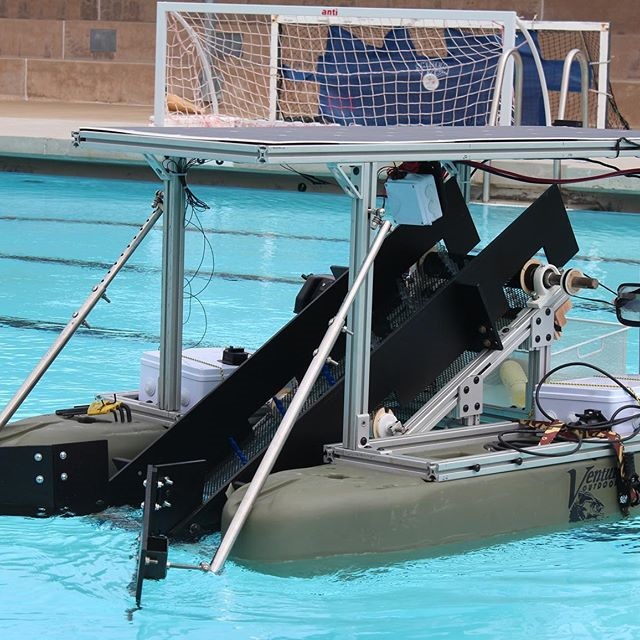
USD demonstrates floating robot to pick up plastics from the sea
There are more than five trillion pieces of plastic debris in the sea, according to National Geographic. But last Friday, University of San Diego Shiley-Marcos School of Engineering students demonstrated a small-scale prototype of a floating robot designed to collect debris in the Great Pacific Garbage Patch that threatens whales, turtles and other sea creatures. The event was at Mission Bay Park.
Created in partnership with the local nonprofit, Clear Blue Sea, the Floating Robot for Eliminating Debris (FRED), is comprised of a four-foot-long conveyor belt attached to the top of two pontoons. The vessel has two small motors for propulsion and is powered by a 12-volt battery and a solar panel.
“These students are helping us with the critical first step of providing our concept and optimizing a design to clean up floating plastics,” explained Jessica Gottdank, business manager at Clear Blue Sea.
FRED was a senior design project last spring, sponsored by Clarity Design Inc., and Tom Lupfer, its founder and CEO.
“While the original prototype was great to see in action, it was far from perfect,” said USD mechanical engineering student Desmond Jones. “After initial testing, FRED only collected around 45 percent of trash placed in a test pool. However, with improvements including booms on the front to guide trash to the conveyor belt we have seen amazing improvement. Our four-person team hopes to prove to the world and potential donors that FRED isn’t some intangible dream but a very real solution.”
________________________
UC San Diego ranks high on Best Colleges for Your Money list
The University of California at San Diego landed in the 9th spot in Meredith Corporation’s Best Colleges for Your Money List, released Monday. UC Irvine landed in the top spot, followed by City University of New York-Baruch College and Princeton University.
University of California Davis was ranked 5th on the list.
According to the Meredith Corporation’s report, UC San Diego was ranked this way:
• Median SAT/ACT score: 1310/30
• Est. price 201920 without aid: $33,600
• Est. price 201920 with average grant: $15,600
• Percent of students who get any grants: 58 percent
• Average student debt: $17,500
• Early career earnings: $61,300
________________________
Princeton Review names SDSU
one of nation’s top colleges
San Diego State University has once again been named one of the country’s top colleges by The Princeton Review. Given its commitment to academics and student success, the university has become a mainstay on The Princeton Review’s Best 385 Colleges list. SDSU’s two-page profile within the 2020 edition notes the university’s quality affordable education, wide array of majors and minors as well as the opportunities for student involvement.
The publication noted 89 percent of SDSU’s freshmen return as sophomores and about 75 percent of students graduate within six years. The profile also speaks to the university’s diverse student population, noting that 115 countries are represented on campus and applauds SDSU for its success in attracting undergraduate students from all over the world.
________________________
Climate change likely to increase
human exposure to toxic mercury
Add another item to the ever-growing list of the dangerous impacts of global climate change: warming oceans are leading to an increase in the harmful neurotoxicant methylmercury in popular seafood, including cod, Atlantic bluefin tuna and swordfish, according to research led by the Harvard John A. Paulson School of Engineering and Applied Sciences (SEAS) and the Harvard T. H. Chan School of Public Health (HSPH). The study, published in Nature, was led by Amina Schartup during her time at SEAS and HSPH. Schartup will join Scripps Institution of Oceanography at the University of California San Diego as an assistant professor starting September 26.
________________________
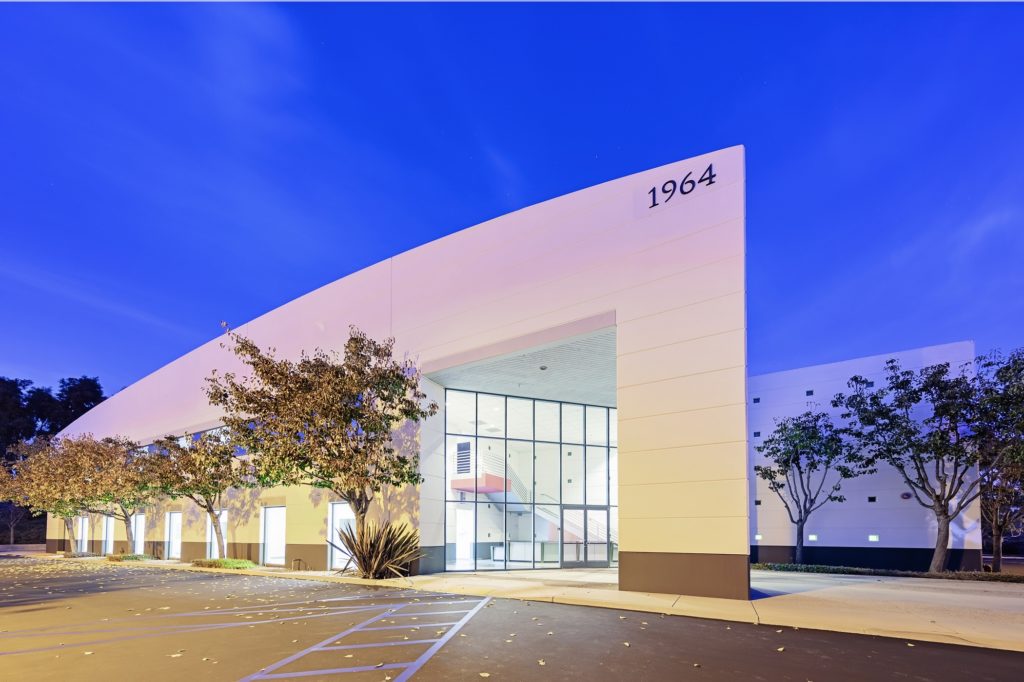
Gemological Institute sells its
building to Chicago firm for $7.3 million
The Gemological Institute of America has sold its building at 1964 Kellogg Ave. in Carlsbad to Chicago-based First Industrial Acquisitions II LLC for $7.3 million. The Gemological Institute vacated the building earlier this year. Its headquarters are at 5345 Armada Drive, Carlsbad.
The building that was sold is situated on an elevated 5.5-acre site next to Carlsbad’s Palomar McClellan Airport and close Interstate 5.
Aric Starck of Cushman & Wakefield’s Carlsbad office represented the seller in the transaction. The buyer was self-represented.
________________________
California legislators return to work
after layoff to consider a myriad of bills
By Dan Morain | CALmatters
Legislators returned to work Monday from a month-long break to consider hundreds of bills affecting everything from guns and electricity customers to Louisiana alligator farmers.
Three of them were authored by San Diego politicians:
- A bill by Assemblywoman Lorena Gonzalez (Democrat) would exempt Internet-based telephone service from state regulation through 2030. AT&T and cable providers want the exemption. Consumer, labor and civil liberties groups oppose it. It is AB 1366.
- A bill that guards against Trump administration roll-backs of federal clean air, water, labor and endangered species laws, the so-called Trump Insurance bill (SB1), by Senate Pro Tem Toni Atkins (Democrat).
- A bill that would allow more lawsuits against churches, schools and other institutions responsible for molestation of children in their care, AB 218 by Gonzalez.
Other pieces of legislation:
- Give electric utilities, primarily Pacific Gas & Electric, the authority to use bonds of up to $40 billion to pay off wildfire damages. AB 235by Assemblyman Chad Mayes, Yucca Valley Republican.
- Restrict bogus medical exemptions for parents who don’t want their kids vaccinated. Senate Bill 276by Sen. Richard Pan, Sacramento Democrat.
- Restrict access to e-cigarettes to minors, a bill opposed by health groups. It is AB 1639 by Assemblyman Adam Gray, Merced Democrat.
- Impose a $25 tax on gun sales to fund violence prevention, AB 18 by Marc Levin, Marin County Democrat.
- Allow for continued importation of alligator products. It is AB 719 by Blanca Rubio, Baldwin Park Democrat. Without the bill, alligator products will be banned starting on Jan. 1. Louisiana alligator farmers, the state of Mississippi, leather producers and pet food producers are pushing for the bill. Environmentalists oppose it, noting there is no way to tell the difference between farmed and wild ‘gators.
________________________
New shuttle service between Carlsbad
Poinsettia Coaster station and
commercial/industrial areas to be launched
The “Carlsbad Connector,” a Coaster shuttle connecting commuters to workplaces and areas in Carlsbad, will officially launch Monday, Aug. 19– a new pilot service and the first program of its kind in San Diego County.
The shuttle service is a partnership between the city of Carlsbad, North County Transit District (NCTD) and the San Diego Association of Governments (SANDAG). Designed to bridge the gap between the Carlsbad Poinsettia COASTER Station and key surrounding areas, it will operate like Uber and Lyft, using an app-based technology developed by RideCo and operated by WeDriveU.
Commuters will be able to book trips on 12-passenger vans that will provide transportation between the station and the city’s primary industrial and commercials cores, located west of Interstate 5 and in the McClellan-Palomar Airport area. The shuttles will drop employees off within a short walk from their workplace.
Carlsbad Connector combines the partners’ goals to increase COASTER ridership, help commuters get to their destination in a convenient and timely manner, and reduce emissions by decreasing the number of employees who drive to work alone. Learn more at www.CarlsbadConnector.com.

